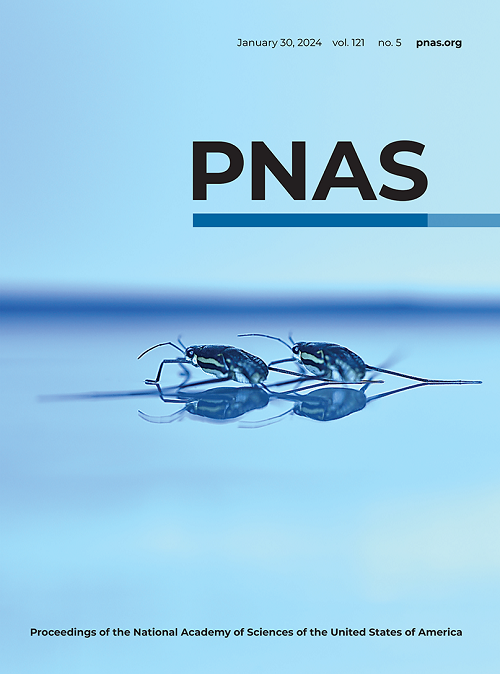Diversification, niche adaptation, and evolution of a candidate phylum thriving in the deep Critical Zone
IF 9.1
1区 综合性期刊
Q1 MULTIDISCIPLINARY SCIENCES
Proceedings of the National Academy of Sciences of the United States of America
Pub Date : 2025-03-18
DOI:10.1073/pnas.2424463122
引用次数: 0
Abstract
The deep subsurface soil microbiome encompasses a vast amount of understudied phylogenetic diversity and metabolic novelty, and the metabolic capabilities and ecological roles of these communities remain largely unknown. We observed a widespread and relatively abundant bacterial phylum (CSP1-3) in deep soils and evaluated its phylogeny, ecology, metabolism, and evolutionary history. Genome analysis indicated that members of CSP1-3 were actively replicating in situ and were widely involved in the carbon, nitrogen, and sulfur cycles. We identified potential adaptive traits of CSP1-3 members for the oligotrophic deep soil environments, including a mixotrophic lifestyle, flexible energy metabolisms, and conservation pathways. The ancestor of CSP1-3 likely originated in an aquatic environment, subsequently colonizing topsoil and, later, deep soil environments, with major CSP1-3 clades adapted to each of these distinct niches. The transition into the terrestrial environment was associated with genome expansion, including the horizontal acquisition of a range of genes for carbohydrate and energy metabolism and, in one lineage, high-affinity terminal oxidases to support a microaerophilic lifestyle. Our results highlight the ecology and genome evolution of microbes in the deep Critical Zone.多样化,生态位适应,以及在深临界区繁荣的候选门的进化
深层地下土壤微生物群包含大量未被研究的系统发育多样性和代谢新颖性,这些群落的代谢能力和生态作用在很大程度上仍然未知。我们观察到了一个分布广泛且相对丰富的细菌门(CSP1-3),并对其系统发育、生态、代谢和进化历史进行了评价。基因组分析表明,CSP1-3的成员在原位积极复制,并广泛参与碳、氮和硫循环。我们确定了CSP1-3成员对低营养深层土壤环境的潜在适应特征,包括混合营养生活方式、灵活的能量代谢和保护途径。CSP1-3的祖先可能起源于水生环境,随后在表土和深层土壤环境中定居,主要的CSP1-3枝适应了这些不同的生态位。向陆地环境的过渡与基因组扩增有关,包括一系列碳水化合物和能量代谢基因的水平获取,以及在一个谱系中支持微嗜气生活方式的高亲和力末端氧化酶。我们的研究结果突出了深层临界区微生物的生态学和基因组进化。
本文章由计算机程序翻译,如有差异,请以英文原文为准。
求助全文
约1分钟内获得全文
求助全文
来源期刊
CiteScore
19.00
自引率
0.90%
发文量
3575
审稿时长
2.5 months
期刊介绍:
The Proceedings of the National Academy of Sciences (PNAS), a peer-reviewed journal of the National Academy of Sciences (NAS), serves as an authoritative source for high-impact, original research across the biological, physical, and social sciences. With a global scope, the journal welcomes submissions from researchers worldwide, making it an inclusive platform for advancing scientific knowledge.

 求助内容:
求助内容: 应助结果提醒方式:
应助结果提醒方式:


